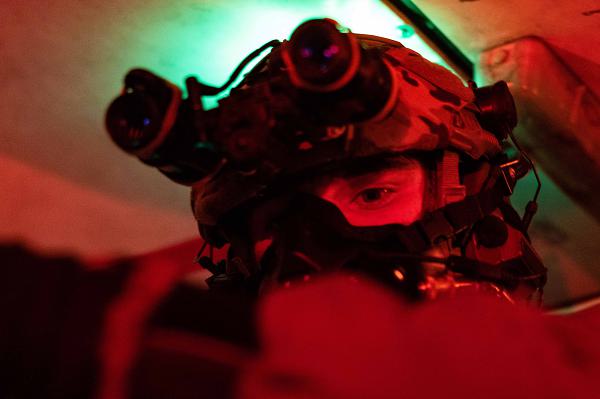
Yuma Proving Ground, Arizona. (January 5, 2025): It is a place where Special Forces learn to turn themselves into human airplanes, leaping into space and flying themselves to pinpoint locations on the ground. In this photo by Sergeant Nathan Mitchell, a Marine prepares to conduct a high-altitude high-opening jump during military free-fall sustainment training. Learning how to do combat insertions by parachute is the specialty of the Army’s Military Freefall School, a part of the John F. Kennedy Special Warfare Center.
The school teaches members of all services the art of military freefall parachuting in three courses, basic, jumpmaster and advanced military freefall. The center teaches two types of parachute insertion techniques, the HALO (high altitude-low opening) and the HAHO (high altitude-high opening). The goal of each is to parachute from aircraft and arrive at their target with accuracy and stealth.
"High Altitude Low Opening" (HALO) is where a jumper exits the aircraft at a very high altitude and then “flies” great distances before deploying their chutes at low altitude. This longer freefall period increases the precision of the landing. Used extensively by Special Forces operators, the "high" refers to the exit altitude and "low" refers to the parachute opening altitude.
The method has definite advantages and significant dangers. Because of the high altitudes involved, HALO jumpers must wear oxygen masks to guard against developing Hypoxia, a potentially fatal condition. The primary benefit of a HALO jump is the ability to infiltrate an area without being detected due to aircraft noise.
The high altitude-high opening (HAHO) jump is used when an aircraft can’t safely fly over enemy territory without alerting ground defenses and causing a threat to jumpers. In a HAHO jump, the chute is deployed shortly after exiting the aircraft at high altitude (15,000 to 35,000 feet.) Parachutists can glide long distances, sometimes up to thirty miles, towards their target in jumps that can last up to twenty minutes. Jumpers are equipped with oxygen masks, ballistic helmets, tactical goggles, flight suits, altimeters, and GPS.
Students at the Freefall School come from all military services and are typically drawn from the ranks of elite organizations such as the U.S. Army Special Forces and Rangers, Navy SEALs, Marine Force Reconnaissance, and Air Force Para-Rescue/ Combat Controllers.


